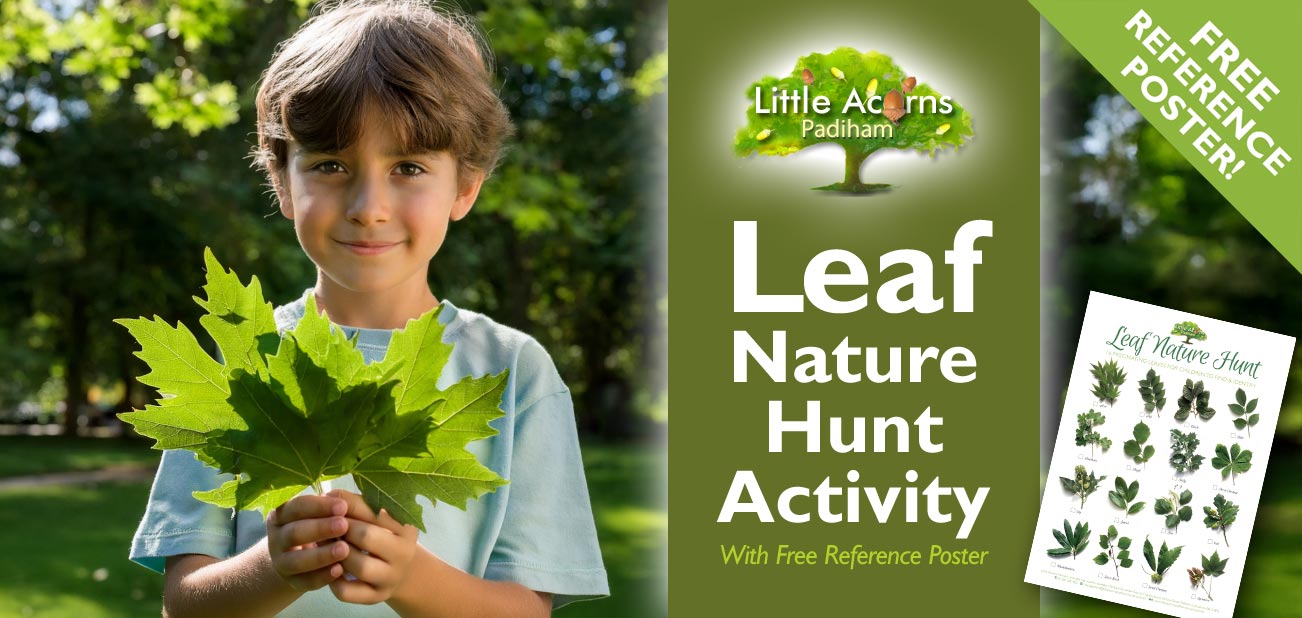
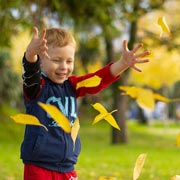 Summer and autumn are wonderful times for children to experience nature in its full glory. At such times, the natural world is brimming with colourful flora and fauna, and it’s a spectacular feast for their eyes and senses. Outdoors, little ones can learn an enormous amount about the natural world around them, enjoy some fresh air and freedom – under supervision, of course — and reap the many, profound benefits that nature will provide. With this in mind, today’s post focuses on the rich variety of leaves that children can be encouraged to look out for in a leaf nature hunt activity.
Summer and autumn are wonderful times for children to experience nature in its full glory. At such times, the natural world is brimming with colourful flora and fauna, and it’s a spectacular feast for their eyes and senses. Outdoors, little ones can learn an enormous amount about the natural world around them, enjoy some fresh air and freedom – under supervision, of course — and reap the many, profound benefits that nature will provide. With this in mind, today’s post focuses on the rich variety of leaves that children can be encouraged to look out for in a leaf nature hunt activity.
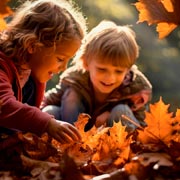 We’ve generated a free reference poster for the activity, which is available for download today. The poster features 16 leaf varieties that children can look out for as part of their leaf-spotting challenge. Those under five will enjoy the simple activity of discovering leaves of different colours, shapes, and sizes — many are beautiful and intricate if they take the opportunity to take a closer look. Older children can be challenged to take things further by learning how to recognise and name the different types. Our free reference poster will help. Take a look below and download a free leaf reference poster today. And be sure to visit this blog area again soon, as we’ll follow up with some creative leaf art activities in the near future. Happy foraging!
We’ve generated a free reference poster for the activity, which is available for download today. The poster features 16 leaf varieties that children can look out for as part of their leaf-spotting challenge. Those under five will enjoy the simple activity of discovering leaves of different colours, shapes, and sizes — many are beautiful and intricate if they take the opportunity to take a closer look. Older children can be challenged to take things further by learning how to recognise and name the different types. Our free reference poster will help. Take a look below and download a free leaf reference poster today. And be sure to visit this blog area again soon, as we’ll follow up with some creative leaf art activities in the near future. Happy foraging!
Grab Your Child’s Free Poster!
Click the preview image below to either download or view the leaf reference poster in high resolution. On most devices, a right-click is the correct approach if you’d like to save the poster file. (It’s an Acrobat PDF that’s less than 2MB in size, so it should not take long to download, even on a mobile device). We recommend printing it from the Acrobat file using your highest-quality settings and paper. It will print in high definition up to A3, but children may also find an A4 or A5 leaflet size print-out beneficial during their outdoor leaf hunt. Use the little tick boxes to mark each type of leaf as it’s successfully discovered.
Points for Children to Note
Encourage children to take a deep, close-up look at the leaves. Many are quite beautiful and incredibly intricate up close. For example:
 Point out the huge variety of different shapes, sizes, and textures of leaves in the natural world.
Point out the huge variety of different shapes, sizes, and textures of leaves in the natural world.- Draw children’s attention to the stalk (a.k.a. ‘petiole’), central midrib, and veins that support the structure of each leaf.
- Suggest your child holds the different leaves up to the light, so they can see the fine filigree of miniature channels (called venules) that transport moisture and nutrients to all parts of a leaf.
- Children can note the different types of seeds that grow with the various leaves. From conkers, acorns, and hazelnuts to winged seeds like those on a sycamore or acer, nature really is miraculous when you think about it.
- A special mention goes to lime leaves. From mid-summer to autumn, they feature quite beautiful seed clusters that are both functional and highly decorative. See the example on the 3rd row, 2nd from the right, on the reference poster.
- Oak leaves feature their wonderful acorn sprigs in summer and early autumn. These are also rather gorgeous if you take time to admire them. However, always ensure babies, toddlers, and young children are kept safe from the potential choking hazard represented by the acorns themselves.
- Ivy leaves look quite unique once their distinctive flower clusters appear. These are much-loved by pollinators and will usually attract a wide variety that includes hoverflies, honeybees, butterflies, and many more.
- Ivy is also one of only four featured leaves that are evergreen. Others on the poster are holly, laurel, and rhododendron. These are a good opportunity to teach children the difference between evergreen and deciduous, particularly come autumn.
In their own way, many leaves are every bit is stunning as flowers for those who take a moment to examine them closely. Encourage little ones to take the time to ponder the fabulous fine details!
Ash or Elder? Hazel or Lime?
There are a few leaves that may, at first, seem a little tricky to tell apart. Ash leaves, for example, are similar to elder. However, there are significantly more ash leaves on each stem than there are elder leaves. While elder typically has between 5 and 7 ‘compound’ leaves per stem, ash usually has up to 15. Ash leaves also have a subtle sheen, while elder leaves are more matte in comparison.
Another pair that can be easily mistaken for one another are hazel and lime, particularly before the seeds/flowers have appeared. Hazel, however, is very matte in finish, while lime is shinier.
More Free Stuff!
Today’s leaf reference poster is just one of a series of free activity posters available to children at this website. Why not check out — and download — some of the others for your child today? Others include a Spring Nature Hunt activity poster, an Autumn Nature Hunt poster, a British Land Mammals poster, a Minibeast spotting poster, a Bird-spotting poster, and a Butterfly spotting poster packed with beautiful butterflies. Visit the links and download for free.

Little Acorns: Your Padiham Nursery
A High-Quality Childcare Nursery in Padiham, Lancashire

 We hope you and your little one(s) enjoy the leaf nature hunt and that the reference poster is useful. We like to encourage families to enjoy the natural world, as we know how hugely beneficial nature is to children. During their time at Little Acorns Nursery in Padiham, children also get to enjoy nature in the nursery’s garden. It has its own nature zone where little ones can look for flora and fauna and enjoy outdoor play in a safe and secure environment.
We hope you and your little one(s) enjoy the leaf nature hunt and that the reference poster is useful. We like to encourage families to enjoy the natural world, as we know how hugely beneficial nature is to children. During their time at Little Acorns Nursery in Padiham, children also get to enjoy nature in the nursery’s garden. It has its own nature zone where little ones can look for flora and fauna and enjoy outdoor play in a safe and secure environment.
Little Acorns Nursery supports free, funded childcare hours for eligible children aged from 9 months to 4 years. The setting is recognised by Ofsted as a good childcare provider. To explore the opportunity of sending your baby, toddler, or preschooler to Little Acorns Nursery in Padiham, get in touch today:
We are a nursery in Padiham (BB12) in Lancashire, providing high-quality weekday childcare to local families in Padiham as well as Hapton, Rose Grove, Burnley, Altham, Huncoat, Read, Simonstone, Sabden, Higham, and Wood End.
Safety Notes
Children, particularly the youngest, should, of course, be accompanied and supervised outdoors by a responsible adult. There are many hazards out there! Adults should therefore be vigilant at all times, do their own risk assessments, and educate children about safety outdoors. A few examples of possible dangers include berries, fungi, nettles, prickly thorns, etc., so teach children not to touch them. Encourage little ones not to collect anything that may be a choking hazard to babies and toddlers (acorns, for example) or that may be poisonous or toxic. Keep children away from physical hazards, including ponds, lakes, steep drops, traffic, roads, strangers, etc. With the right supervision, children will have fun, learn a lot, and stay safe.
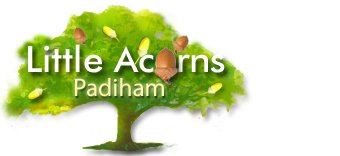
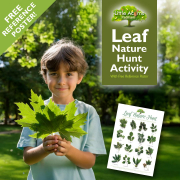
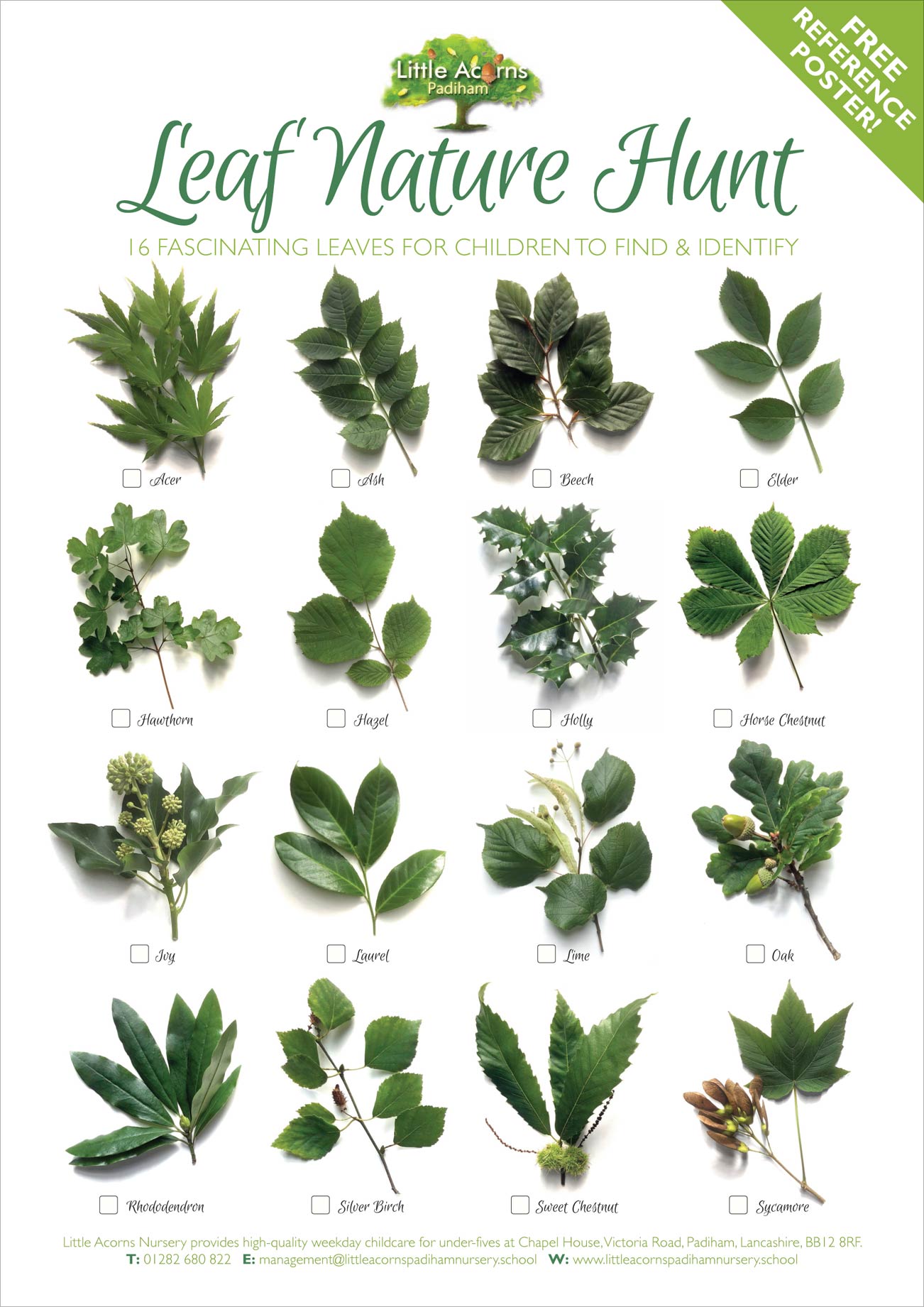
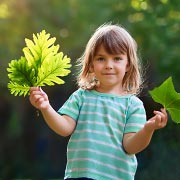 Point out the huge variety of different shapes, sizes, and textures of leaves in the natural world.
Point out the huge variety of different shapes, sizes, and textures of leaves in the natural world.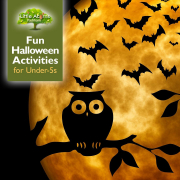
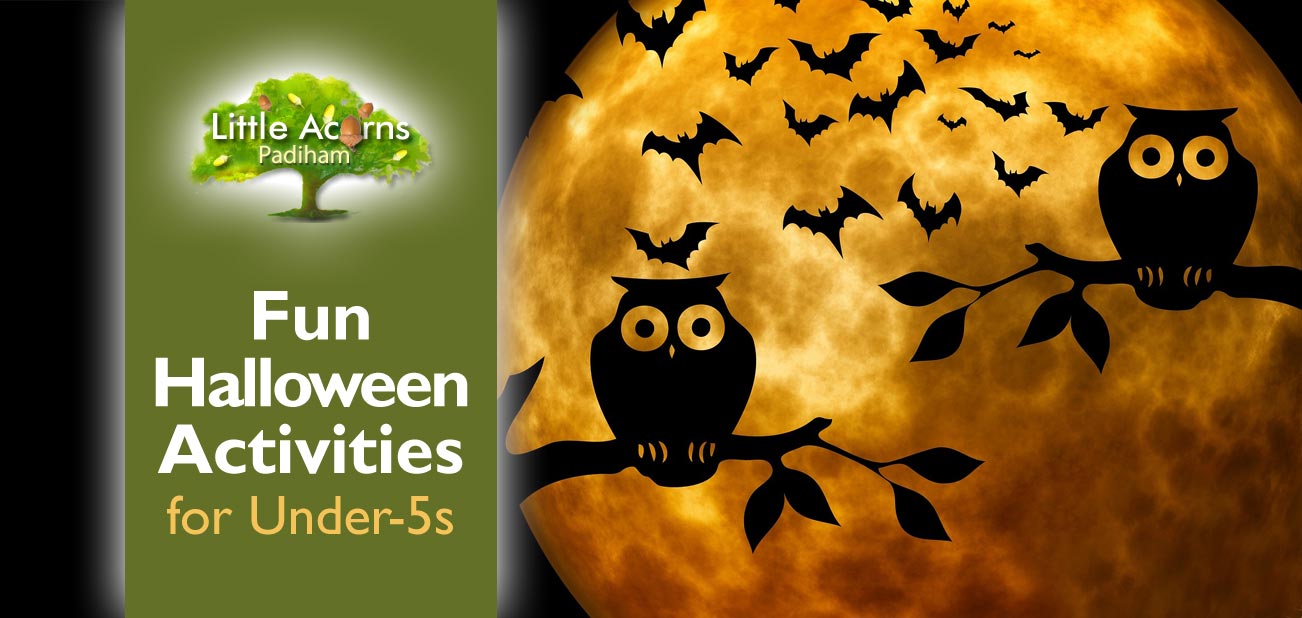
 Let’s get ready for some fun Halloween activities for our under-5s — as well as for older children. Children of all ages are naturally drawn to the unique imagery, fun activities, and spookiness of Halloween.
Let’s get ready for some fun Halloween activities for our under-5s — as well as for older children. Children of all ages are naturally drawn to the unique imagery, fun activities, and spookiness of Halloween.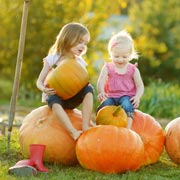 A simple but fun activity for children in the run-up to Halloween is to pick pumpkins. Whether it’s simply a case of visiting a local garden centre or store to choose a pumpkin from a themed display, or visiting a local farm where children can search for a favourite pumpkin in fields laden with them, it’s great fun for little ones. Children are sure to enjoy choosing from the usually huge array of different sizes and shapes.
A simple but fun activity for children in the run-up to Halloween is to pick pumpkins. Whether it’s simply a case of visiting a local garden centre or store to choose a pumpkin from a themed display, or visiting a local farm where children can search for a favourite pumpkin in fields laden with them, it’s great fun for little ones. Children are sure to enjoy choosing from the usually huge array of different sizes and shapes.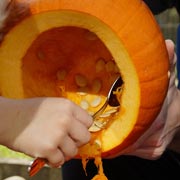 Once your child has a pumpkin or other gourd, it’s almost imperative that it’s carved (by a supervising adult) and made into what Americans call a Jack-O’-Lantern. Many families will be totally familiar with these, typically being a hollowed-out pumpkin with eyes, a nose, and a mouth — or indeed other kinds of design as indicated in the accompanying image. Children can be involved in the design, painting with paint if going that route, and perhaps spooning out the inside flesh (keep for later; see the food and drink section below).
Once your child has a pumpkin or other gourd, it’s almost imperative that it’s carved (by a supervising adult) and made into what Americans call a Jack-O’-Lantern. Many families will be totally familiar with these, typically being a hollowed-out pumpkin with eyes, a nose, and a mouth — or indeed other kinds of design as indicated in the accompanying image. Children can be involved in the design, painting with paint if going that route, and perhaps spooning out the inside flesh (keep for later; see the food and drink section below).  However, any cutting will be too dangerous for little ones, so should be done only by an adult. It’s the same with the next step, which is lighting a candle or tea light to put inside once it’s dark. The pumpkin lanterns can then be placed outdoors for neighbours and friends to see and the children themselves will find these fascinating once night falls. They make for a great atmosphere and a bit of spookiness!
However, any cutting will be too dangerous for little ones, so should be done only by an adult. It’s the same with the next step, which is lighting a candle or tea light to put inside once it’s dark. The pumpkin lanterns can then be placed outdoors for neighbours and friends to see and the children themselves will find these fascinating once night falls. They make for a great atmosphere and a bit of spookiness!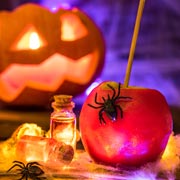 Children will also love spreading the Halloween theme around the house. This activity is made easy by purchasing inexpensive Halloween decorations that are available commercially in places like supermarkets each October. Whether it’s cotton spider webs, complete with pretend black spiders, that can be strung from picture frames, furniture or across ornaments, little LED strung lanterns that have a Halloween theme, or glow-in-the-dark plastic skulls, ghosts, or pumpkins, there are a myriad of fun decorations that children can use to theme bedrooms and living rooms. It all makes for a very spooky and fun atmosphere come Halloween.
Children will also love spreading the Halloween theme around the house. This activity is made easy by purchasing inexpensive Halloween decorations that are available commercially in places like supermarkets each October. Whether it’s cotton spider webs, complete with pretend black spiders, that can be strung from picture frames, furniture or across ornaments, little LED strung lanterns that have a Halloween theme, or glow-in-the-dark plastic skulls, ghosts, or pumpkins, there are a myriad of fun decorations that children can use to theme bedrooms and living rooms. It all makes for a very spooky and fun atmosphere come Halloween.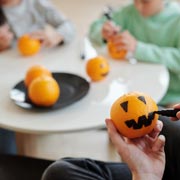 It’s also possible for children and families to create their own Halloween-themed decorations, with a bit of imagination. Stretched-out cotton wool can mimic spiders’ webs, for example. Children can get creative and make cut-out (with adult help for the youngest) spiders, bats, and suchlike to put on and around such webs. Children can paint oranges with faces to represent mini pumpkin Jack-O’-Lanterns, or even string these together into themed garlands. They can get involved in making Halloween-themed decorated biscuits or cookies too, which we’ll come to next.
It’s also possible for children and families to create their own Halloween-themed decorations, with a bit of imagination. Stretched-out cotton wool can mimic spiders’ webs, for example. Children can get creative and make cut-out (with adult help for the youngest) spiders, bats, and suchlike to put on and around such webs. Children can paint oranges with faces to represent mini pumpkin Jack-O’-Lanterns, or even string these together into themed garlands. They can get involved in making Halloween-themed decorated biscuits or cookies too, which we’ll come to next. Parents/carers can help children make, or simply decorate, Halloween-themed biscuits. See the photo to get an idea of how they can be baked and painted to represent wonderful ghosts, spider webs, bats and more. These are attractive as well as being great fun for little ones to get involved with, under supervision. What’s more, they can be eaten and are often delicious!
Parents/carers can help children make, or simply decorate, Halloween-themed biscuits. See the photo to get an idea of how they can be baked and painted to represent wonderful ghosts, spider webs, bats and more. These are attractive as well as being great fun for little ones to get involved with, under supervision. What’s more, they can be eaten and are often delicious! One of children’s favourite Halloween activities is dressing up. Children, including those under five, love to put on themed costumes to become a ghost, witch, wizard, spider, skeleton or character from a film like Harry Potter. Even better is when their friends, neighbours or siblings join in and they can each compare outfits and get into character. “Boo!” they may shout, or perhaps they’ll cast pretend spells and ‘fly’ on makeshift broomsticks. It’s all great fun!
One of children’s favourite Halloween activities is dressing up. Children, including those under five, love to put on themed costumes to become a ghost, witch, wizard, spider, skeleton or character from a film like Harry Potter. Even better is when their friends, neighbours or siblings join in and they can each compare outfits and get into character. “Boo!” they may shout, or perhaps they’ll cast pretend spells and ‘fly’ on makeshift broomsticks. It’s all great fun! Outfits can be purchased, often inexpensively, online or through supermarkets when Halloween is approaching. Alternatively, children can get creative and make their own. A white sheet with suitable holes cut for eyes is perfect for a ghost outfit. Black material or capes are a great start for a witch or wizard outfit and pointy hats can be made, perhaps with a bit of help from adults, from cardboard and then painted black or covered with black tissue paper. Any number of different outfits can be made, in fact, and all that’s needed is imagination, the right materials, and a bit of time. Children’s creativity will be stimulated and they’ll get a great feeling of accomplishment once the fancy dress outfits are complete.
Outfits can be purchased, often inexpensively, online or through supermarkets when Halloween is approaching. Alternatively, children can get creative and make their own. A white sheet with suitable holes cut for eyes is perfect for a ghost outfit. Black material or capes are a great start for a witch or wizard outfit and pointy hats can be made, perhaps with a bit of help from adults, from cardboard and then painted black or covered with black tissue paper. Any number of different outfits can be made, in fact, and all that’s needed is imagination, the right materials, and a bit of time. Children’s creativity will be stimulated and they’ll get a great feeling of accomplishment once the fancy dress outfits are complete. All of the above activities can be combined when children throw a Halloween party for friends and/or neighbours. It’s all the more fun when other children come along in their own themed outfits. Together, children can play games, get into character, listen to spooky music, eat homemade Halloween-themed food and drinks, and have a wonderful time. Not only are parties fun but they also deepen bonds and help little children strengthen social skills. It’s all hugely creative too.
All of the above activities can be combined when children throw a Halloween party for friends and/or neighbours. It’s all the more fun when other children come along in their own themed outfits. Together, children can play games, get into character, listen to spooky music, eat homemade Halloween-themed food and drinks, and have a wonderful time. Not only are parties fun but they also deepen bonds and help little children strengthen social skills. It’s all hugely creative too. Part of the party could involve, perhaps, a ‘trick or treat’ session around the neighbourhood — under close supervision of one or more adults, of course. Children get great glee from this tradition, which often results in the bonus of lots of goodies to take home and sweets to eat (… and it’s only once a year) or perhaps a light-hearted, though often hilarious ‘scare’, should a neighbour decide to go with the ‘trick’ option.
Part of the party could involve, perhaps, a ‘trick or treat’ session around the neighbourhood — under close supervision of one or more adults, of course. Children get great glee from this tradition, which often results in the bonus of lots of goodies to take home and sweets to eat (… and it’s only once a year) or perhaps a light-hearted, though often hilarious ‘scare’, should a neighbour decide to go with the ‘trick’ option.

 Pyjamarama is a one-day fundraising event that’s organised through the children’s reading charity BookTrust. It takes place each year across a variety of UK settings including homes, schools, preschools, nurseries and more. As well as being great fun for those organising and taking part, the initiative is beneficial to millions of disadvantaged children. The ultimate aim is to raise money to fund the purchase of books and resources, so that every child in the UK gets the chance for bedtime stories and each family has proper reading opportunities. The initiative is hugely popular, great fun, and transforms lives. Today, we take a look at what to expect, how to get involved, and the many benefits of Pyjamarama.
Pyjamarama is a one-day fundraising event that’s organised through the children’s reading charity BookTrust. It takes place each year across a variety of UK settings including homes, schools, preschools, nurseries and more. As well as being great fun for those organising and taking part, the initiative is beneficial to millions of disadvantaged children. The ultimate aim is to raise money to fund the purchase of books and resources, so that every child in the UK gets the chance for bedtime stories and each family has proper reading opportunities. The initiative is hugely popular, great fun, and transforms lives. Today, we take a look at what to expect, how to get involved, and the many benefits of Pyjamarama. Pyjamarama is always a fun day for both adults and children. The added aspect of pyjamas makes it special, quirky and relaxed. And, at the end of the day, it’s incredibly worthwhile. Not only does it raise money to give disadvantaged children and their families opportunities for reading and bedtime stories, but it also encourages those children taking part in Pyjamarama to read more, for pleasure as much as anything. Additionally, it gives children a different perspective and encourages altruism and empathy for others less fortunate than themselves.
Pyjamarama is always a fun day for both adults and children. The added aspect of pyjamas makes it special, quirky and relaxed. And, at the end of the day, it’s incredibly worthwhile. Not only does it raise money to give disadvantaged children and their families opportunities for reading and bedtime stories, but it also encourages those children taking part in Pyjamarama to read more, for pleasure as much as anything. Additionally, it gives children a different perspective and encourages altruism and empathy for others less fortunate than themselves.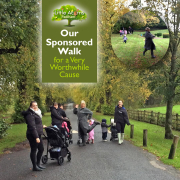
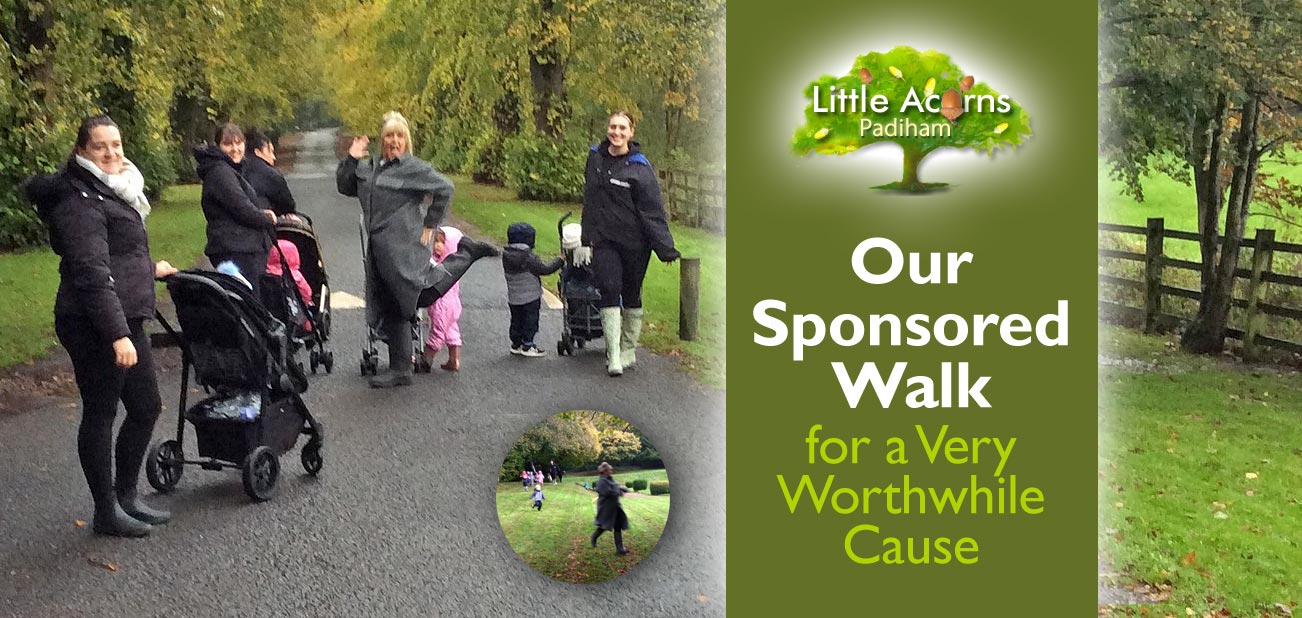
 During the autumn half-term break, adults and children from Little Acorns Nursery in Padiham embarked on a sponsored walk around Gawthorpe Park. The walk took place during a cold and wet Tuesday, on 24th October, with children from our Little Seedlings, Little Acorns and Great Oaks rooms donning Wellington boots, anoraks and wet weather gear for the task. Once assembled, little ones and adults braved the inclement weather and went on to complete the walk admirably, even making the local Burnley Express paper
During the autumn half-term break, adults and children from Little Acorns Nursery in Padiham embarked on a sponsored walk around Gawthorpe Park. The walk took place during a cold and wet Tuesday, on 24th October, with children from our Little Seedlings, Little Acorns and Great Oaks rooms donning Wellington boots, anoraks and wet weather gear for the task. Once assembled, little ones and adults braved the inclement weather and went on to complete the walk admirably, even making the local Burnley Express paper When the rain persisted, children were also encouraged to use magic wands to wish it away!
When the rain persisted, children were also encouraged to use magic wands to wish it away! The sponsored walk was dedicated to a cause that’s extremely close to our hearts — the memory of Yusuf, the baby son of one of our families — as well as aiming to raise awareness of SIDS (Sudden Infant Death Syndrome). £148 was raised through our sponsored walk and a further £52 through a cake sale by our
The sponsored walk was dedicated to a cause that’s extremely close to our hearts — the memory of Yusuf, the baby son of one of our families — as well as aiming to raise awareness of SIDS (Sudden Infant Death Syndrome). £148 was raised through our sponsored walk and a further £52 through a cake sale by our 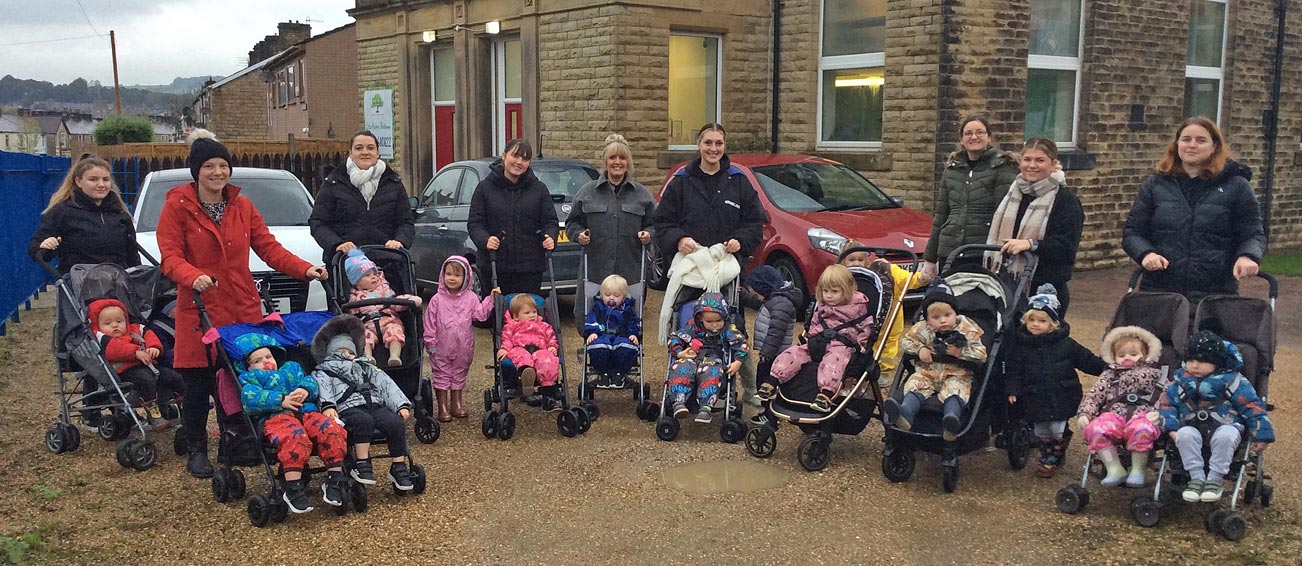
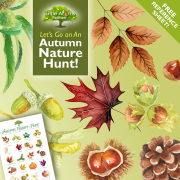
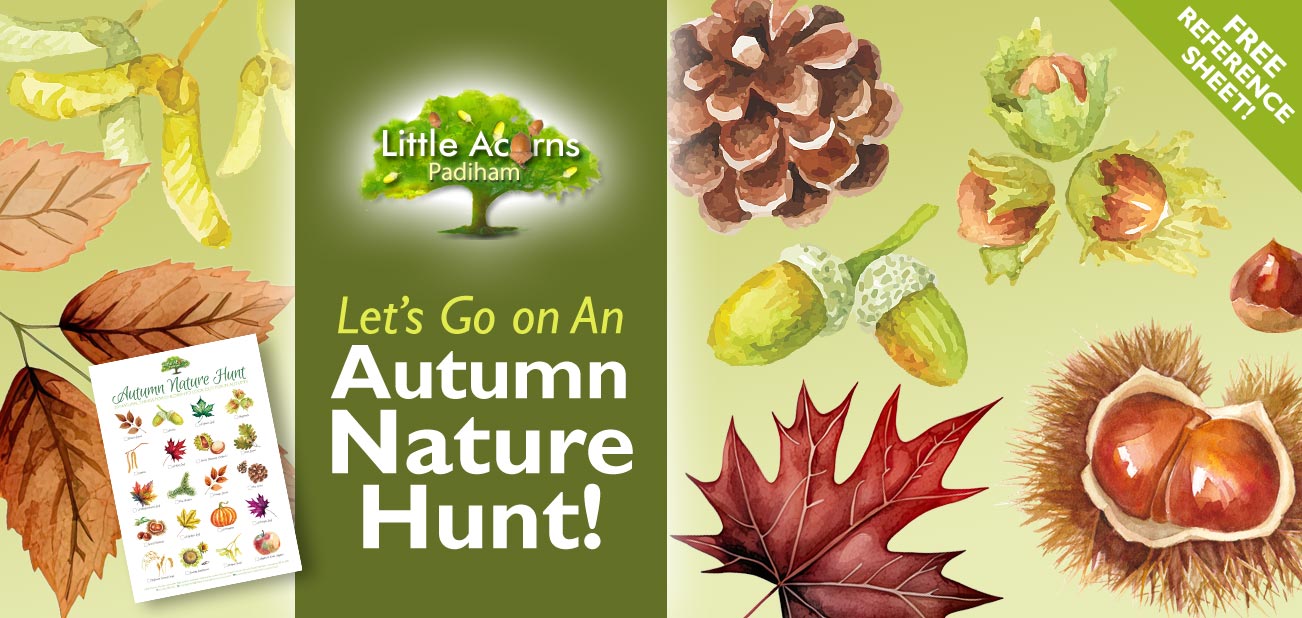
 As leaves start to blanket the ground and the earthy scents of autumn begin to infuse the air, it’s the perfect time to engage children in a captivating adventure that celebrates the season. In today’s post, we’ll introduce you to an Autumn Nature Hunt, an exciting outdoor activity for children that’s not only entertaining but also educational.
As leaves start to blanket the ground and the earthy scents of autumn begin to infuse the air, it’s the perfect time to engage children in a captivating adventure that celebrates the season. In today’s post, we’ll introduce you to an Autumn Nature Hunt, an exciting outdoor activity for children that’s not only entertaining but also educational.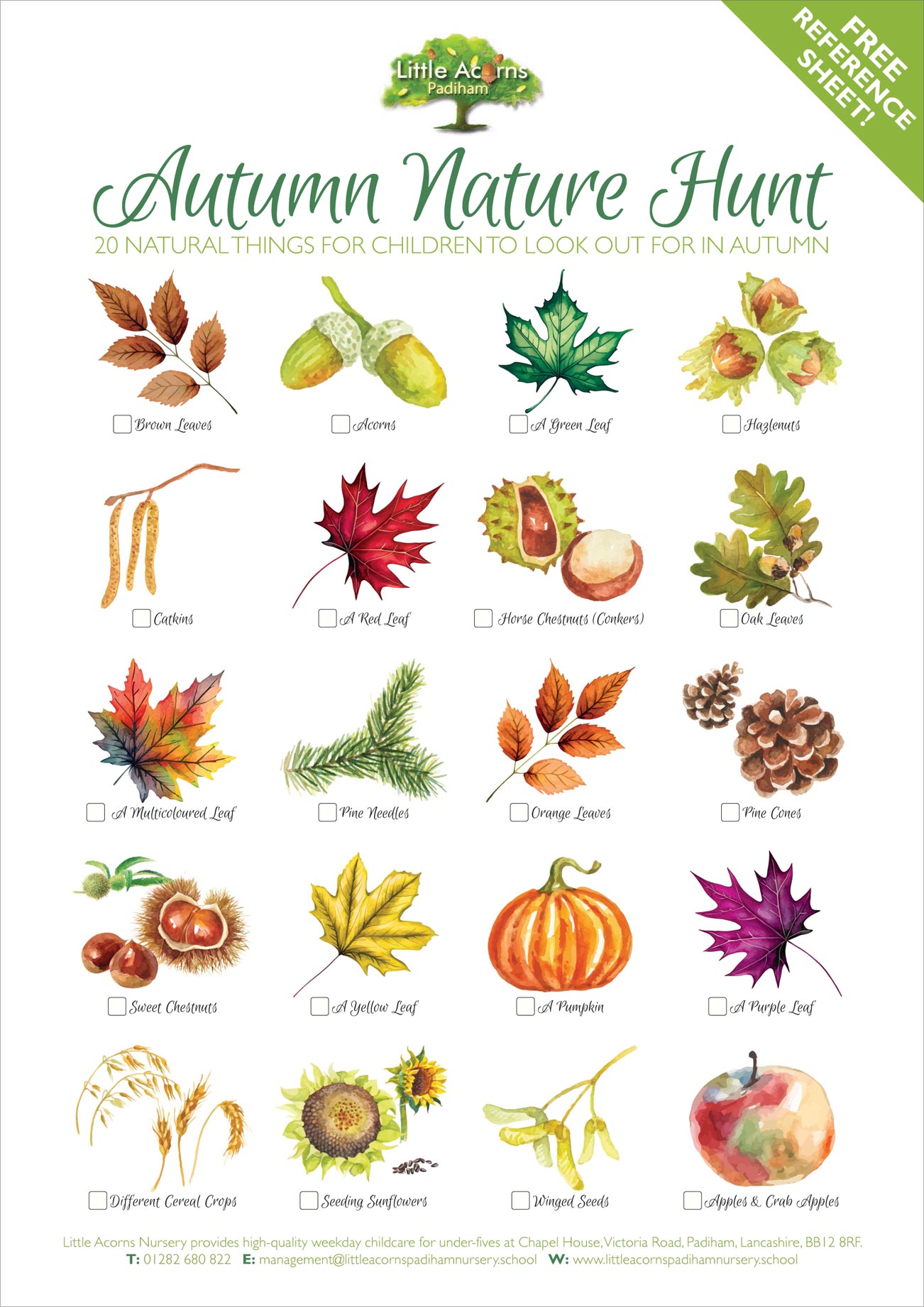
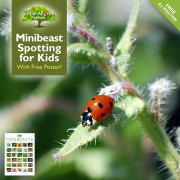


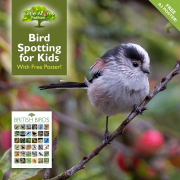

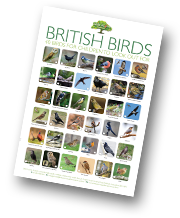 Today’s bird spotting activity for kids continues our series of nature-themed posts that each come with a free reference poster for families to download. Featuring 40 British birds, the activity and the poster represent a great opportunity to get children of all ages outdoors, closer to nature. As many of us know,
Today’s bird spotting activity for kids continues our series of nature-themed posts that each come with a free reference poster for families to download. Featuring 40 British birds, the activity and the poster represent a great opportunity to get children of all ages outdoors, closer to nature. As many of us know, 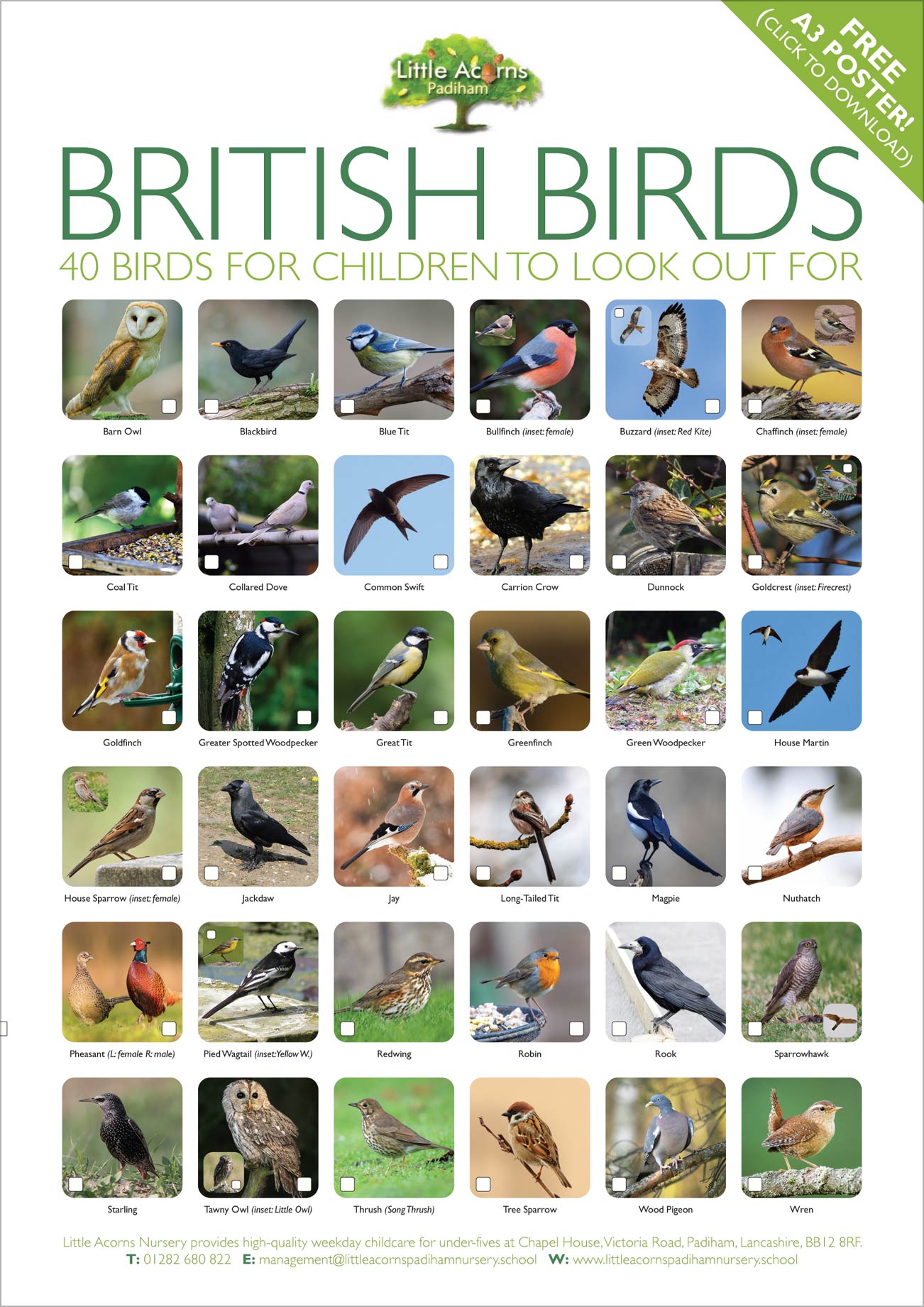
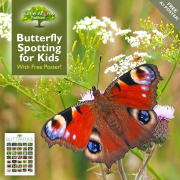
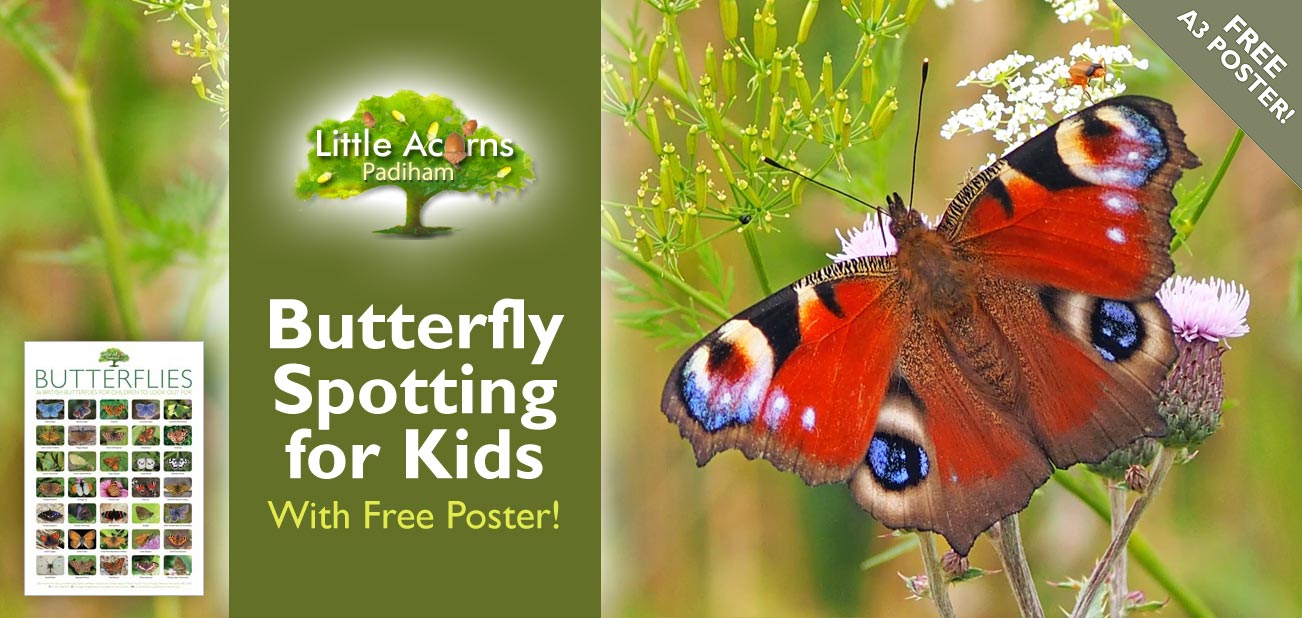
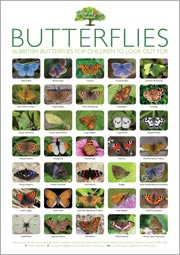 At the time of writing, it’s peak butterfly-spotting time — more adult butterflies can be seen in late July and early August than at any other time in the year. That makes it the perfect time for children to get out in nature to spot these charming creatures. Doing so is fun, educational and also beneficial in so many ways – we’ll explain more about that later.
At the time of writing, it’s peak butterfly-spotting time — more adult butterflies can be seen in late July and early August than at any other time in the year. That makes it the perfect time for children to get out in nature to spot these charming creatures. Doing so is fun, educational and also beneficial in so many ways – we’ll explain more about that later.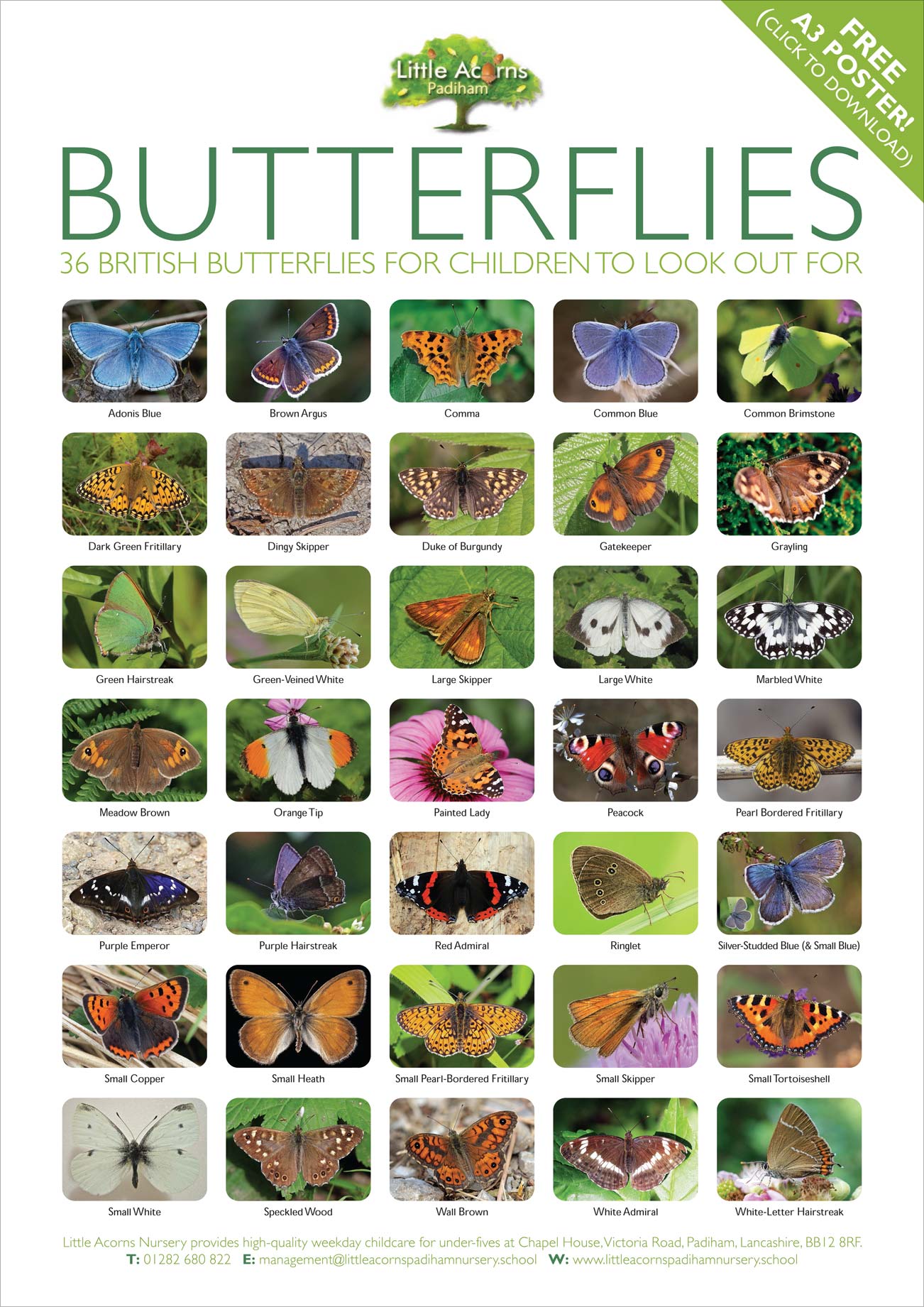


 This is what we call our blog (short for ‘web log’) where we regularly publish guides and useful information for parents of children under five.
This is what we call our blog (short for ‘web log’) where we regularly publish guides and useful information for parents of children under five.  We’re @NurseryPadiham on Twitter, so you can follow us at
We’re @NurseryPadiham on Twitter, so you can follow us at  We’re @TotsNursery on Facebook (because we took over the Adventure Tots childcare business), so you can follow us at
We’re @TotsNursery on Facebook (because we took over the Adventure Tots childcare business), so you can follow us at  We’re @LittleAcornsNurseryBB12 on Instagram, so you can follow us at
We’re @LittleAcornsNurseryBB12 on Instagram, so you can follow us at  We’re also @LittleAcornsNurseryBB12 on Pinterest, so you can follow our pins and boards at
We’re also @LittleAcornsNurseryBB12 on Pinterest, so you can follow our pins and boards at  We appreciate that, if you’re reading this, you’ve already found us. However, if you ever need to find us again and aren’t sure where to look, we’re also on Google.
We appreciate that, if you’re reading this, you’ve already found us. However, if you ever need to find us again and aren’t sure where to look, we’re also on Google.